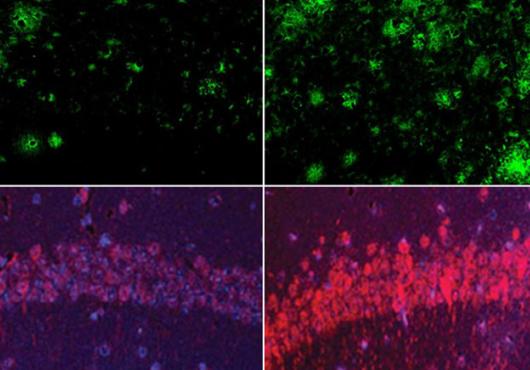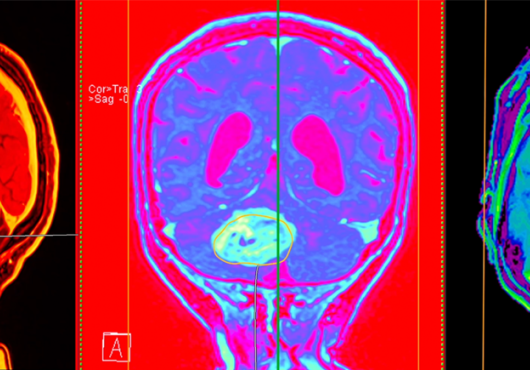Combination drug therapy has become a staple for treating many infections. Doctors treat extensively drug resistant forms of tuberculosis, for example, with one drug that breaks down the pathogen’s protective barriers and opens the door for another to deliver the deathblow.
Just as some drugs work better together, other pairings are counter-productive. “The question we asked was how can it be that two drugs in combination are less effective than one of them alone,” said senior author and HMS associate professor of systems biology Roy Kishony.
Kishony and his team have found that the answer lies in the way some antibiotic drugs influence a bacterial cell’s gene expression levels. Some combinations of these altered genetic behaviors can “put the cell in a better position for survival,” said Kishony, thereby undermining the effectiveness of that particular combination of drugs.
The work, which was done in collaboration with Stanford University research associate Selwyn Quan, is described in the Nov. 13th Cell.
Kishony’s work on drug combinations began in 2006 when his lab found that understanding why certain drugs work well or poorly together can help researchers identify the cellular functions they attack. Drugs that block protein production, for instance, work poorly with drugs that block DNA replication, but they work well with drugs that weaken the cell wall.
According to first author Tobias Bollenbach, a research fellow in systems biology, clinical researchers are primarily interested in drugs that together work better than either alone, and so studies tend to focus on explaining some of the mechanisms behind synergistic drug pairings.
Yet ever since the Kishony lab discovered in 2008 that antagonistic drug pairings slow down the evolution of antibiotic resistance, it has become increasingly clear that these drug combinations warrant further study.
To explore the dynamics of these antagonistic drug interactions, Kishony, Bollenbach and doctoral candidate Remy Chait zeroed in on two classes of antibiotics that suppress one another. One class interrupts the replication of DNA and the other blocks the manufacture of proteins. They studied the combined effects on the bacterium Escherichia coli.
Drugs that impede DNA synthesis, such as ciprofloxacin (a commonly used drug), interrupt cell division. As a result, E. coli enters a state of stress.
Normally, when a cell is stressed it responds by trying to repair itself and by scaling back on its other activities, such as production of ribosomes, the molecular machines that manufacture proteins. But with ciprofloxacin, the cells try to repair DNA while also producing ribosomes. This is not in the cell’s best interest, because making ribosomes uses up cellular resources and creates a surplus of proteins, which is even more costly.
When the team added the additional stress of a protein synthesis–inhibiting drug, such as tetracycline, instead of causing the cells more trouble, the second drug counteracted the overproduction of ribosomes and proteins. “Since this other drug inhibits the ribosome, it corrects for the fact that the cell made too many in the first place,” said Bollenbach.
The team hypothesized that the second drug restored the cellular equilibrium that the first drug disrupted. This enabled the bacteria to flourish in the midst of this dual-antibiotic assault, though it is not yet mechanistically clear why.
To corroborate these initial findings, the team conducted a second round of experiments in which they impaired the ability of E. coli to produce ribosomes. As a result, the cells could more easily withstand the assault of the first drug, yet succumbed to the second, completely removing the strong antagonism between the drugs.
This work “suggests that there are things about antibiotics and other inhibitors that we never suspected,” said University of British Columbia microbiologist Julian Davies. “We are so naive about how drugs work.”
Justifiably so—there are always thousands of reactions going on inside a cell. It is difficult to predict how adding a drug that affects one of these reactions will affect the whole cell or neighboring cells.
“That is where systems biology is leading us,” said Davies. Taking a systems approach—which involves thinking about how all of a cell’s pathways and moving parts behave as a whole—may lead to new ways of interpreting data and understanding perturbations, such as the addition of a drug to the mix.
The discovery has inspired Kishony and his team to ask a more general question about antibiotic interactions. He recently received a federal stimulus grant to pursue a study that explores the genetic determinants of drug interactions more broadly and investigate whether cells can be synthetically manipulated to change the way drugs interact.
“Understanding how cells alter their genetic programs in the presence of antibiotic drugs could provide insights into new ways to discourage the growth of pathogens and encourage the growth of ‘good’ bacteria in the lab and in the clinic,” said Kishony.
Students may contact Roy Kishony at roy_kishony@hms.harvard.edu for more information.
Conflict Disclosure: The authors declare no conflicts of interest.
Funding Sources: This research was funded by the National Institutes of Health. Tobias Bollenbach received support from an Alexander von Humboldt fellowship. The authors are solely responsible for the content of this work.


